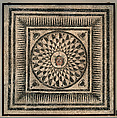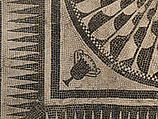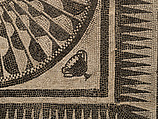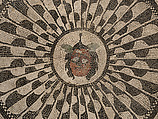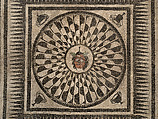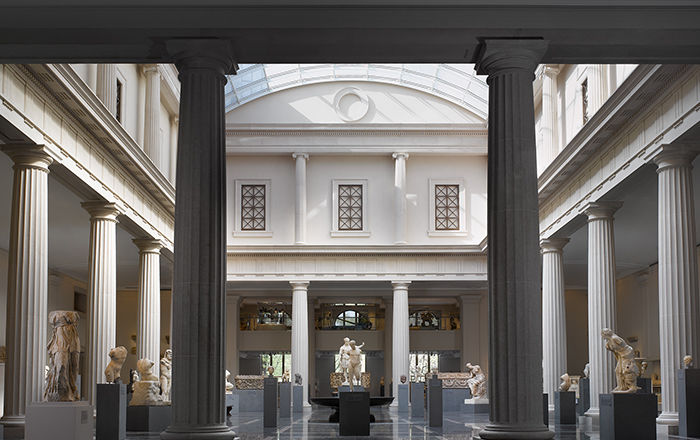On loan to The Met The Met accepts temporary loans of art both for short-term exhibitions and for long-term display in its galleries.
Mosaic of the House of Citharist of Pompeii
The head of the Gorgon Medusa appears in the center of this mosaic floor panel, framed by a scale pattern of black-and-white bands with kantharoi or drinking cups in the corners. Feared for her ability to turn the living into stone, Medusa’s visage protected household members from harm, and is frequently found in Roman mosaics of this period. This example once adorned a small room in one of the most prominent residences in Pompeii, the House of the Citharist. It remained in place for more than a century even as the richly decorated house was renovated, expanded, and refurbished. The building was buried in the eruption of Mount Vesuvius in 79 CE.
This image cannot be enlarged, viewed at full screen, or downloaded.
This artwork is meant to be viewed from right to left. Scroll left to view more.
